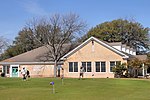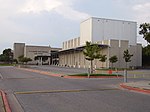Brackenridge Field Laboratory

The Brackenridge Field Laboratory (BFL) is an urban research station owned by the University of Texas at Austin. Established officially in 1967, it contains 82 acres of land and research infrastructure. It is dedicated to studies in biology. The extensive historical data kept about its diverse habitats has been important to the study of biodiversity, ecological succession and ecology. Some of the key studies into the red imported fire ant (Solenopsis invicta) and potential biocontrol agents such as phorid flies have originated at the field station. It also contains the second largest insect collection in Texas. Since 1973 the Brackenridge Field Laboratory has been a subject of controversy due to the high value of the land.In 1910, George Washington Brackenridge donated 500 acres (2.0 km2) located on the Colorado River to the university. The Brackenridge Field Laboratory was established on 82 acres (330,000 m2) of the land in 1967. A satellite field station in Bastrop County (Stengl Lost Pines Biological Station) is also available for biological research and teaching.
Excerpt from the Wikipedia article Brackenridge Field Laboratory (License: CC BY-SA 3.0, Authors, Images).Brackenridge Field Laboratory
Lake Austin Boulevard, Austin
Geographical coordinates (GPS) Address Nearby Places Show on map
Geographical coordinates (GPS)
| Latitude | Longitude |
|---|---|
| N 30.284 ° | E -97.778 ° |
Address
Lake Austin Boulevard 2907
78703 Austin
Texas, United States
Open on Google Maps









